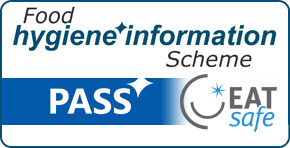Food Hygiene Ratings Explained
The Food Hygiene Rating Scheme (FHRS) is a Food Standards Agency scheme that is run in conduction with local authorities in England, Wales and Northern Ireland.
Following an inspection by the local authority, businesses are given a rating between 0 and 5, with 0 being the lowest rating and 5 being the highest:
5 – hygiene standards are very good
4 – hygiene standards are good
3 – hygiene standards are generally satisfactory
2 – some improvement is necessary
1 – major improvement is necessary
0 – urgent improvement is required
The ratings themselves are only a snapshot in time and don't guarantee hygiene standards between inspections, but they do allow consumers to make informed decisions when it comes to choosing where to eat and is a reflection on how well the business is doing overall.
The rating covers the handling of food, how food is stored, how food is prepared, the cleanliness of facilities and how food safety is managed.
It does not however cover the quality of the food, customer service, culinary skill, presentation or comfort.
The rating itself is made up of three main components:
Food hygiene and safety procedures
How hygienically the food is handled – how it is prepared, cooked, re-heated, cooled and stored.
Food hygiene is graded on a scale of 0 to 25 with 0 being the top score and 25 the poorest score.
Structural requirements
The physical condition of the business this includes cleanliness, layout, lighting, ventilation, pest control and other facilities.
Structural requirements are graded on a scale of 0 to 25 with 0 being the top score and 25 the poorest score.
Confidence in management
Covers how the business keeps food safe and the processes, systems and training that the business has in place to ensure that good food hygiene standards are maintained now and in the future.
Confidence in management is graded on a scale of 0 to 30 with 0 being the top score and 30 the poorest score.
Total score
If you add the scores from each rating category, then you will arrive at a total score which is then combined to get a final overall rating for the business.
You will see the total score frequently when you search for businesses on this website. It allows you to see the very best five star businesses and the poorest zero star businesses:
| Total Score | Rating | Definition |
|---|---|---|
| 0 - 15 | 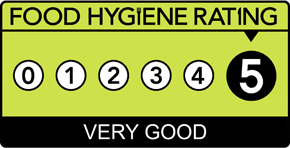 | Very Good |
| 20 | 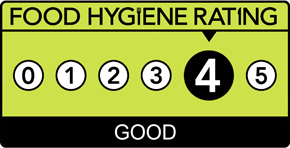 | Good |
| 25 - 30 | 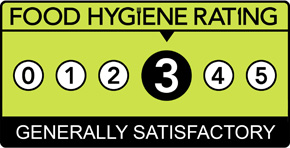 | Generally satisfactory |
| 35 - 40 | 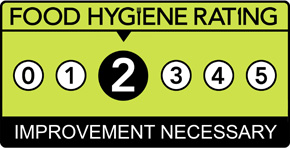 | Improvement necessary |
| 45 - 50 | 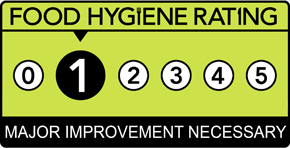 | Major improvement necessary |
| 45 - 50 | 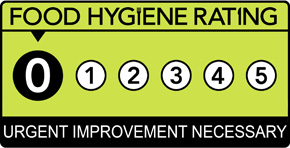 | Urgent improvement necessary |
Food Hygiene Information Scheme in Scotland (FHIS)
The FHIS scheme is used in Scotland rather than the FHRS scheme. It is similar in that it is still run by the Food Standards Agency in conjunction with local authorities but the ratings themselves are different (and simpler).
Following a food hygiene inspection by the local authority, businesses are given one of three ratings:
Pass
This rating means that the business meets the legal requirements for food hygiene.
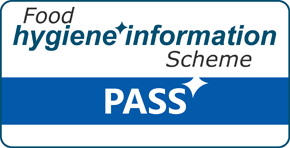
Improvement Required
This rating means the business didn't meet the legal requirements and is required to make improvements.

Exempt Premises
This rating means the business met the legal requirements for a “Pass” rating but doesn't meet the criteria to be part of the scheme. These are businesses that wouldn't normally be classed as a food business and as such, are low-risk to people's health in terms of food safety. Examples include newsagents, chemist shops etc.
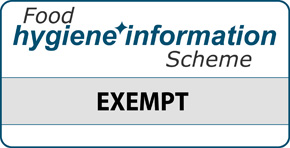
The FHIS Eat Safe Award
The Eat Safe Award runs alongside the FHIS scheme and is awarded to businesses that go above and beyond the standards required to achieve a “Pass” rating. These businesses strive for excellence when delivering food hygiene standards.
